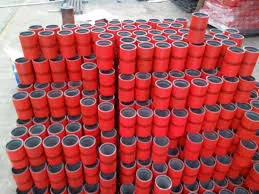- Afrikaans
- Albanian
- Amharic
- Arabic
- Armenian
- Azerbaijani
- Basque
- Belarusian
- Bengali
- Bosnian
- Bulgarian
- Catalan
- Cebuano
- Corsican
- Croatian
- Czech
- Danish
- Dutch
- English
- Esperanto
- Estonian
- Finnish
- French
- Frisian
- Galician
- Georgian
- German
- Greek
- Gujarati
- Haitian Creole
- hausa
- hawaiian
- Hebrew
- Hindi
- Miao
- Hungarian
- Icelandic
- igbo
- Indonesian
- irish
- Italian
- Japanese
- Javanese
- Kannada
- kazakh
- Khmer
- Rwandese
- Korean
- Kurdish
- Kyrgyz
- Lao
- Latin
- Latvian
- Lithuanian
- Luxembourgish
- Macedonian
- Malgashi
- Malay
- Malayalam
- Maltese
- Maori
- Marathi
- Mongolian
- Myanmar
- Nepali
- Norwegian
- Norwegian
- Occitan
- Pashto
- Persian
- Polish
- Portuguese
- Punjabi
- Romanian
- Russian
- Samoan
- Scottish Gaelic
- Serbian
- Sesotho
- Shona
- Sindhi
- Sinhala
- Slovak
- Slovenian
- Somali
- Spanish
- Sundanese
- Swahili
- Swedish
- Tagalog
- Tajik
- Tamil
- Tatar
- Telugu
- Thai
- Turkish
- Turkmen
- Ukrainian
- Urdu
- Uighur
- Uzbek
- Vietnamese
- Welsh
- Bantu
- Yiddish
- Yoruba
- Zulu
Understanding the Role of Seating Nipple in Tubing Systems for Enhanced Performance
The Importance of Seating Nipple in Tubing Understanding Its Role in Modern Operations
In the world of oil and gas production, the integrity of well completions is crucial for maximizing efficiency and safety. One critical component that plays a significant role in this process is the seating nipple, often found in tubing systems. The seating nipple is a specialized fitting which allows for the secure placement of downhole equipment and devices, ensuring that these tools function as intended within the harsh environments of oil and gas wells. This article delves into the concept of seating nipples in tubing, exploring their functions, types, and overall importance in modern drilling operations.
Understanding the Seating Nipple
The seating nipple is a mechanical interface that provides a seat for various downhole apparatuses, such as packers, safety valves, or control devices. These components are essential for maintaining well control, isolating zones of production, and preventing potential hazards such as blowouts. Typically made from high-strength materials capable of withstanding extreme temperatures and pressures, seating nipples come in various sizes and configurations to suit different well designs and operational requirements.
Installation of a seating nipple is typically done during the well completion phase, where it is strategically placed within the tubing string. This positioning allows for efficient deployment and retrieval of downhole tools. The primary function of a seating nipple is to provide a reliable and secure seating location for equipment, ensuring that these tools remain in place during operation, particularly when subjected to dynamic conditions.
Types of Seating Nipples
Seating nipples can be broadly classified into several types, each designed to cater to specific functions
1. Standard Seating Nipples These are the most common type and are designed for general applications. They offer a simple seat for various types of downhole tools.
2. Retrievable Seating Nipples These allow for easier retrieval of downhole devices once they have served their purpose. They are often integrated with a simple pulling mechanism that enables the operator to bring back the seat along with the downhole tool.
seating nipple in tubing

4. Dummy Nipples These are used when a seating function is not required, often serving as placeholders or spacers in the tubing string.
Each type serves a specific role and is vital for ensuring that the downhole systems operate safely and effectively under varying conditions.
The Importance of Proper Installation
The effectiveness of a seating nipple heavily depends on its proper installation. An improperly seated nipple can lead to various issues such as leaks, equipment malfunction, or even catastrophic failures during operation. Therefore, technicians must adhere to strict procedural guidelines and perform thorough inspections to ensure that seating nipples are fitted correctly.
Moreover, regular maintenance and assessments of these components are essential. Over time, seating nipples can experience wear or damage due to extreme temperatures, pressure fluctuations, and corrosive materials present in well operations. As such, maintaining the integrity of these components is vital for the longevity of the well and the safety of the entire operation.
Innovative Trends in Seating Nipple Design
The oil and gas industry continues to evolve, introducing new technologies that enhance the performance of seating nipples. Advancements in material science have led to the development of enhanced alloys and coatings that can withstand harsher environments. Additionally, there is a growing trend towards automation and smart technologies, which could eventually lead to automated monitoring systems for seating nipple performance, providing real-time data for operations.
The integration of smart technologies promises to improve decision-making processes and operational efficiencies while ensuring safety standards are met. This evolution in design and technology reflects the industry's commitment to increasing productivity and reducing the environmental impacts of oil and gas extraction.
Conclusion
In summary, seating nipples in tubing are fundamental components that ensure the secure placement of downhole tools, contributing to the overall effectiveness and safety of oil and gas operations. Understanding the types, functions, and best practices associated with these devices is essential for professionals in the industry. As technology advances and the demands of the sector evolve, seating nipples will remain a crucial aspect of well integrity and operational efficiency, underscoring their significance in modern drilling practices.
-
Tubing Pup Joints: Essential Components for Oil and Gas OperationsNewsJul.10,2025
-
Pup Joints: Essential Components for Reliable Drilling OperationsNewsJul.10,2025
-
Pipe Couplings: Connecting Your World EfficientlyNewsJul.10,2025
-
Mastering Oilfield Operations with Quality Tubing and CasingNewsJul.10,2025
-
High-Quality Casing Couplings for Every NeedNewsJul.10,2025
-
Boost Your Drilling Efficiency with Premium Crossover Tools & Seating NipplesNewsJul.10,2025







